-
 Bitcoin
Bitcoin $118100
-0.44% -
 Ethereum
Ethereum $3585
5.43% -
 XRP
XRP $3.434
5.65% -
 Tether USDt
Tether USDt $1.000
0.02% -
 BNB
BNB $743.8
3.89% -
 Solana
Solana $178.7
3.84% -
 USDC
USDC $1.000
0.03% -
 Dogecoin
Dogecoin $0.2381
12.81% -
 TRON
TRON $0.3270
3.62% -
 Cardano
Cardano $0.8315
4.93% -
 Hyperliquid
Hyperliquid $44.51
-4.42% -
 Stellar
Stellar $0.4710
1.52% -
 Sui
Sui $3.896
-2.51% -
 Chainlink
Chainlink $18.09
6.98% -
 Hedera
Hedera $0.2681
9.31% -
 Bitcoin Cash
Bitcoin Cash $516.7
4.83% -
 Avalanche
Avalanche $23.95
6.96% -
 Shiba Inu
Shiba Inu $0.00001490
5.67% -
 UNUS SED LEO
UNUS SED LEO $8.966
0.80% -
 Toncoin
Toncoin $3.294
4.39% -
 Litecoin
Litecoin $105.4
4.69% -
 Polkadot
Polkadot $4.356
5.30% -
 Uniswap
Uniswap $10.29
17.25% -
 Monero
Monero $327.9
-3.04% -
 Bitget Token
Bitget Token $4.942
4.33% -
 Ethena USDe
Ethena USDe $1.001
0.08% -
 Pepe
Pepe $0.00001348
2.17% -
 Dai
Dai $1.000
0.02% -
 Aave
Aave $320.8
0.58% -
 Bittensor
Bittensor $411.8
-4.07%
What is the lightning network in blockchain and how to improve transaction efficiency?
The Lightning Network boosts Bitcoin transaction speed and lowers fees by using off-chain payment channels, improving efficiency through optimized channel management, advanced routing, and technologies like watchtowers.
Mar 17, 2025 at 10:05 am

What is the Lightning Network in Blockchain and How to Improve Transaction Efficiency?
Key Points:
- The Lightning Network is a layer-2 scaling solution for Bitcoin that significantly increases transaction speed and reduces fees. It achieves this by moving transactions off the main Bitcoin blockchain and onto a network of interconnected payment channels.
- Improving Lightning Network transaction efficiency involves optimizing channel management, routing algorithms, and utilizing advanced technologies like watchtowers and atomic swaps.
- Understanding the intricacies of channel opening, closing, and routing is crucial for efficient use. Furthermore, choosing appropriate channel sizes and strategically selecting peers for channel establishment are critical for optimal performance.
- Several technological advancements and ongoing research aim to further enhance the speed, scalability, and security of the Lightning Network.
What is the Lightning Network?
The Lightning Network is a layer-2 scaling solution designed to dramatically improve the speed and efficiency of Bitcoin transactions. Unlike traditional Bitcoin transactions which are recorded on the main blockchain (layer-1), the Lightning Network operates on a separate network of interconnected payment channels. This means transactions are conducted off-chain, significantly reducing the load on the Bitcoin blockchain itself. Think of it as a high-speed expressway built on top of a regular highway. The highway (Bitcoin blockchain) is still there, providing the foundation, but the expressway allows for much faster and more efficient travel (transactions).
- How it works: Imagine Alice and Bob want to make numerous small transactions between each other. Instead of broadcasting each transaction individually to the Bitcoin blockchain (which is slow and expensive), they open a payment channel. This channel establishes a commitment to a certain amount of Bitcoin that is locked in a multi-signature escrow. They can then make payments back and forth within this channel without needing to broadcast each transaction to the blockchain. Only when the channel is closed do they need to update the blockchain with the final balances. This process significantly reduces fees and increases speed, as transactions only require a few signatures and are not subject to the block confirmation times of the main blockchain.
- The Role of Nodes and Channels: The Lightning Network consists of numerous nodes, which are essentially computers running Lightning Network software. These nodes are interconnected through payment channels, forming a network. When Alice wants to send Bitcoin to Carol, she doesn't necessarily need a direct channel with Carol. If Alice has a channel with Bob, and Bob has a channel with Carol, the payment can be routed through Bob's node. This routing is automated and handled by the Lightning Network software. The network's efficiency hinges on the density and connectivity of these channels.
- Security and Privacy: The Lightning Network leverages cryptographic techniques to ensure the security and privacy of transactions. The multi-signature escrow prevents fraud, and the off-chain nature of transactions provides a higher level of privacy compared to on-chain transactions, although not absolute anonymity. However, the routing information, while not revealing specific transaction amounts, can still reveal some information about the participants involved.
How to Improve Lightning Network Transaction Efficiency:
Improving the efficiency of the Lightning Network is a continuous process involving several key areas:
- Optimizing Channel Management: Efficient channel management is crucial. This involves strategically opening and closing channels to maintain optimal connectivity and liquidity. Opening too many channels can tie up significant capital, while too few channels can limit routing possibilities. The size of each channel should also be carefully considered, balancing the need for sufficient capacity with the cost of locking up funds. Sophisticated channel management tools and algorithms are being developed to automate this process and optimize channel usage. The ideal scenario is to have a network with many small, well-connected channels rather than a few large, isolated ones. This increases redundancy and resilience, ensuring transactions can find alternative routes even if certain channels become unavailable.
- Advanced Routing Algorithms: The efficiency of payment routing directly impacts transaction speed and success rate. Current routing algorithms prioritize finding the cheapest route, but they can be improved by considering factors such as channel capacity, reliability, and the potential for congestion. Researchers are actively working on developing more sophisticated algorithms that can anticipate network conditions and select optimal routes proactively. These algorithms can incorporate machine learning techniques to learn from past routing data and improve their performance over time. Furthermore, improvements in the speed and efficiency of the routing protocols themselves are essential to minimizing latency.
- Utilizing Watchtowers: Watchtowers are a crucial element in enhancing the security and usability of the Lightning Network. They are third-party services that monitor channels on behalf of users. This is particularly beneficial for users who are offline or have limited resources to monitor their channels continuously. If a user's node is offline, a watchtower can ensure the channel remains active and prevent the loss of funds. This feature improves the overall reliability and accessibility of the Lightning Network, making it more user-friendly for a wider range of participants.
- Implementing Atomic Swaps: Atomic swaps are a method of exchanging cryptocurrencies directly between two parties without needing a central intermediary. Integrating atomic swaps into the Lightning Network could further enhance efficiency and expand its capabilities beyond Bitcoin. This would allow users to seamlessly exchange different cryptocurrencies within the Lightning Network, facilitating cross-chain transactions and expanding its utility. The development and implementation of robust and secure atomic swap protocols are crucial for achieving this.
- Improving Node Software and Hardware: The performance of individual Lightning nodes significantly impacts the overall network efficiency. Optimizing node software to minimize latency and maximize throughput is crucial. Furthermore, using powerful hardware with sufficient processing power and memory can enhance the capacity and speed of each node. This can be particularly important for nodes that handle a large volume of transactions. Ongoing development in node software and hardware continues to improve network efficiency.
- Network Topology and Connectivity: The overall structure and connectivity of the Lightning Network itself play a critical role in its efficiency. A densely connected network with many small channels provides better redundancy and routing options, ensuring transactions can always find a path even if some channels are temporarily unavailable. Research into optimal network topologies and strategies for incentivizing the creation of new channels is ongoing. This includes exploring ways to encourage the participation of more nodes, particularly in regions with limited connectivity.
- Layer-3 Solutions: While the Lightning Network is a layer-2 solution, there is ongoing research into layer-3 solutions that could further enhance its efficiency. These layer-3 solutions could focus on specific applications or use cases, optimizing performance for particular types of transactions. This could involve specialized routing protocols or optimized data structures designed to handle specific transaction patterns. This research is still in its early stages, but it holds the potential to unlock further improvements in the Lightning Network's capabilities.
FAQs:
Q: What are the limitations of the Lightning Network?
A: While the Lightning Network offers significant improvements, it still has limitations. These include the need for users to maintain online nodes, the complexity of channel management, and the potential for channel outages or routing failures. Furthermore, the security of the network relies on the security of individual nodes, and vulnerabilities in node software could compromise the network's integrity. The overall capacity of the network is also still limited compared to the potential demand.
Q: How does the Lightning Network differ from other scaling solutions?
A: The Lightning Network is distinct from other scaling solutions like sharding or sidechains. It operates as a layer-2 solution on top of the Bitcoin blockchain, creating off-chain payment channels. Other solutions involve changes to the core blockchain protocol itself or create separate blockchains entirely. The Lightning Network's focus is on improving transaction speed and reducing fees without significantly altering the fundamental architecture of Bitcoin.
Q: Is the Lightning Network suitable for all types of Bitcoin transactions?
A: No, the Lightning Network is best suited for smaller, frequent transactions. Large transactions or those requiring immediate finality might be better suited for on-chain transactions. The Lightning Network's effectiveness increases with the frequency of transactions between parties, as the cost of opening and closing channels is amortized over multiple transactions.
Q: How can I participate in the Lightning Network?
A: Participation in the Lightning Network involves running a Lightning node, which requires technical expertise. Simpler methods involve using custodial wallets or services that abstract away the complexities of node management. However, using custodial services means relinquishing some control over your funds. Choosing a reputable service is crucial to minimize risks.
Q: What are the future prospects of the Lightning Network?
A: The future of the Lightning Network looks promising. Ongoing development and research are focused on enhancing its efficiency, security, and usability. Increased adoption and the development of more user-friendly tools could lead to widespread use. The integration of new technologies and features, such as atomic swaps and improved routing algorithms, will further enhance its capabilities and expand its potential use cases.
Disclaimer:info@kdj.com
The information provided is not trading advice. kdj.com does not assume any responsibility for any investments made based on the information provided in this article. Cryptocurrencies are highly volatile and it is highly recommended that you invest with caution after thorough research!
If you believe that the content used on this website infringes your copyright, please contact us immediately (info@kdj.com) and we will delete it promptly.
- Penny Altcoins Eyeing $1 in Q3 2025: Cardano, BlockchainFX, and the Hunt for Crypto Gold
- 2025-07-19 05:10:13
- Trump, Stablecoins, and New Laws: A Crypto Revolution?
- 2025-07-19 05:10:13
- Princess Anne's 75th Birthday: A Royal First and a Celebration of Duty
- 2025-07-19 04:50:13
- Flare Crypto: Powering the Decentralized Future with a Robust Data Backbone
- 2025-07-19 04:55:13
- Bitcoin's Record Highs: Navigating Risk Assets in the Crypto Craze
- 2025-07-19 05:00:13
- Passive Income Revolution: Crypto Cloud Mining in 2025
- 2025-07-19 05:05:13
Related knowledge
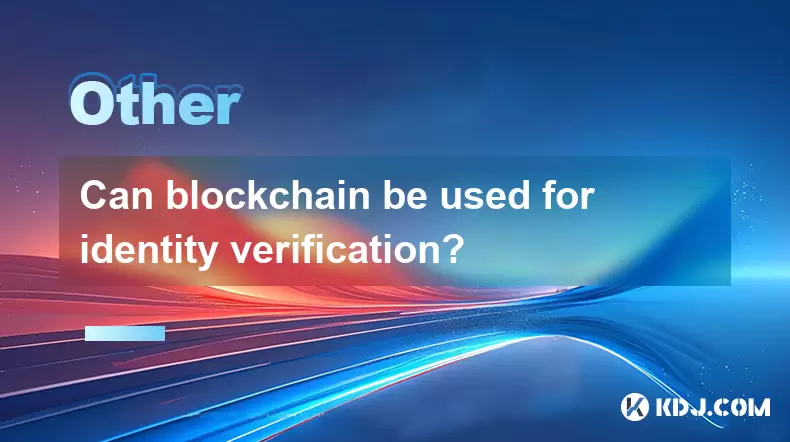
Can blockchain be used for identity verification?
Jul 18,2025 at 02:14pm
Understanding Identity Verification in the Digital AgeIn the modern digital landscape, identity verification has become a critical component for ensur...
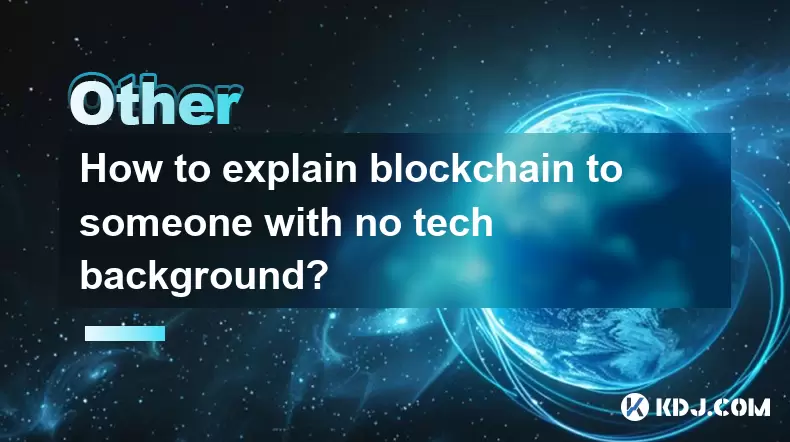
How to explain blockchain to someone with no tech background?
Jul 18,2025 at 11:08pm
Understanding the Basics of BlockchainTo explain blockchain to someone with no tech background, it's essential to start with simple analogies and avoi...
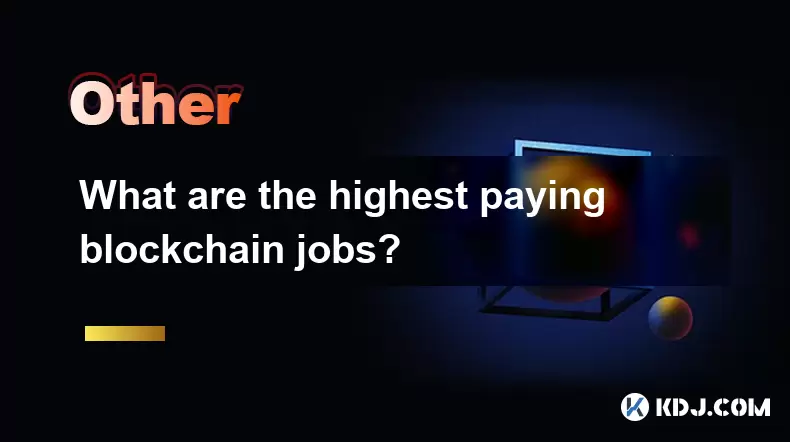
What are the highest paying blockchain jobs?
Jul 19,2025 at 04:49am
Overview of Blockchain Job OpportunitiesThe blockchain industry has evolved from a niche technology to a mainstream field offering a wide array of job...
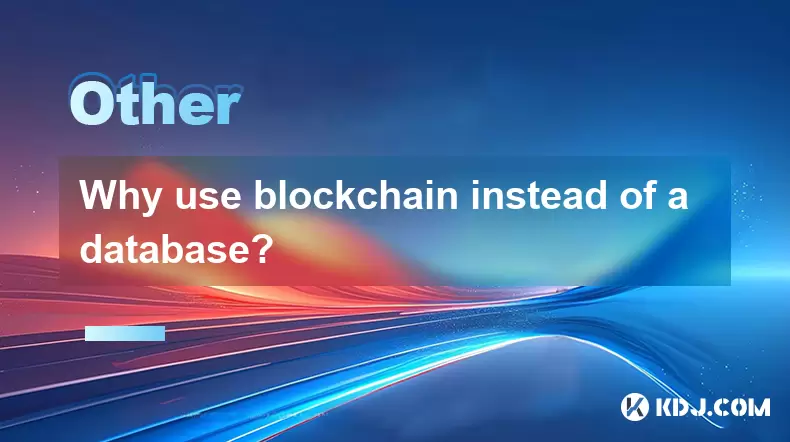
Why use blockchain instead of a database?
Jul 18,2025 at 07:00pm
Decentralization and Trustless SystemsOne of the core reasons for choosing blockchain over a traditional database lies in the concept of decentralizat...
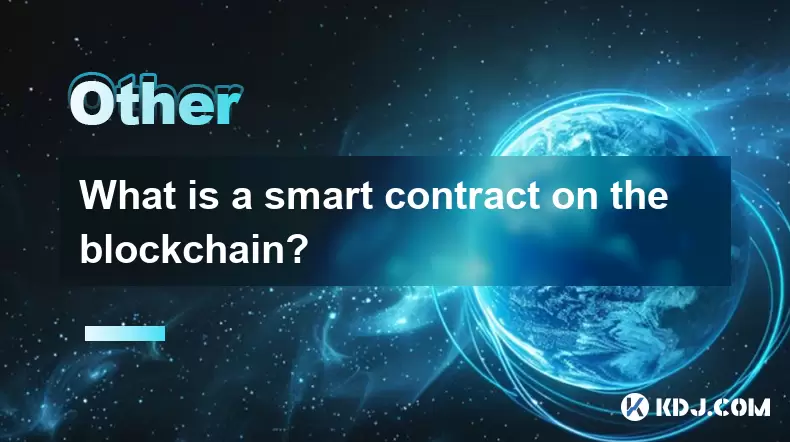
What is a smart contract on the blockchain?
Jul 18,2025 at 06:42pm
Understanding the Concept of a Smart ContractA smart contract is a self-executing contract with the terms of the agreement directly written into code....
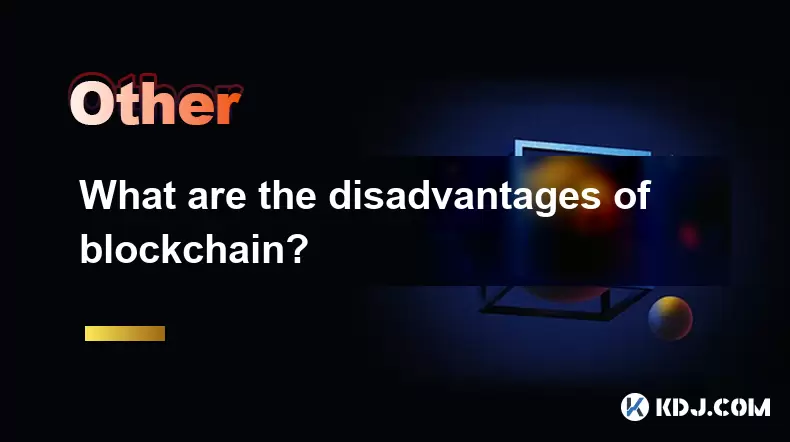
What are the disadvantages of blockchain?
Jul 18,2025 at 10:08pm
High Energy Consumption and Environmental ImpactOne of the most frequently discussed disadvantages of blockchain technology is its high energy consump...

Can blockchain be used for identity verification?
Jul 18,2025 at 02:14pm
Understanding Identity Verification in the Digital AgeIn the modern digital landscape, identity verification has become a critical component for ensur...

How to explain blockchain to someone with no tech background?
Jul 18,2025 at 11:08pm
Understanding the Basics of BlockchainTo explain blockchain to someone with no tech background, it's essential to start with simple analogies and avoi...

What are the highest paying blockchain jobs?
Jul 19,2025 at 04:49am
Overview of Blockchain Job OpportunitiesThe blockchain industry has evolved from a niche technology to a mainstream field offering a wide array of job...

Why use blockchain instead of a database?
Jul 18,2025 at 07:00pm
Decentralization and Trustless SystemsOne of the core reasons for choosing blockchain over a traditional database lies in the concept of decentralizat...

What is a smart contract on the blockchain?
Jul 18,2025 at 06:42pm
Understanding the Concept of a Smart ContractA smart contract is a self-executing contract with the terms of the agreement directly written into code....

What are the disadvantages of blockchain?
Jul 18,2025 at 10:08pm
High Energy Consumption and Environmental ImpactOne of the most frequently discussed disadvantages of blockchain technology is its high energy consump...
See all articles

























































































